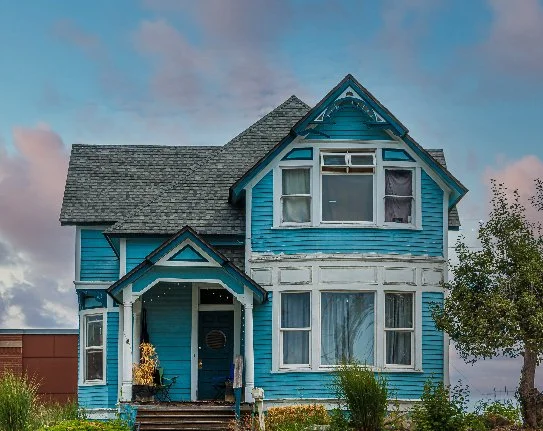Move-In Ready? 6 Potential Issues to Consider in an Aging House
Welcome to your new home! Moving into an aging house can be as exciting as it is filled with surprises. While these houses have their unique charms and character, they may also come with potential issues that require special attention. But don't worry, we're here to help you navigate through some common concerns so that you can make the most out of your move-in experience. Let's take a look at six potential issues to keep in mind when moving into an aging house.
Foundation and Structural Integrity
The foundation and structure of an aging house is one of the most crucial aspects to consider before making your move-in decision. Over time, houses can experience settling or shifting which can lead to cracks, uneven floors, and other problems. Carefully inspect the foundation and structure of the house before finalizing your purchase or rental agreement. If any issues are found, it's best to address them as soon as possible with the help of a professional contractor.
Plumbing and Electrical Systems
Another important aspect to consider is the plumbing and electrical systems in an aging house. These systems can deteriorate over time, leading to leaks, clogs, faulty wiring, and other potential hazards. You need to have these systems thoroughly inspected by a licensed plumber and electrician before you move in. This will not only ensure your safety but also help you plan for any necessary repairs or upgrades.
Some potential signs of plumbing and electrical issues in an old home include frequent clogs, low water pressure, flickering lights, and outdated wiring. If you notice any of these issues during your inspection or after moving in, it's best to have them addressed promptly to avoid potential safety hazards or costly repairs down the line. Unless you have professional experience yourself, we don't recommend you DIY these projects. The last thing you want is a major disaster after just moving in!
Roofing and Insulation
The roof is your first line of defense against the elements, and in an aging house, it's important to pay close attention to its condition. Over time, roofs can deteriorate from exposure to weather and other factors. You must have a professional roofer inspect the roof for any damage or signs of wear and tear before move-in. Additionally, proper insulation is key to maintaining a comfortable living space and keeping energy costs down. If the house has old or insufficient insulation, it may be worth considering adding more before moving in.
Along with roofing and insulation, it's crucial to consider the age and condition of the AC unit in an aging house. Older units may not be as efficient or effective in keeping your home cool, which can lead to higher energy bills. It's important to have a professional HVAC technician, such as someone at Denillo Heating & Cooling, Inc.., inspect the unit and make any necessary repairs or replacements before moving in. This will not only ensure your comfort but also prevent potential issues in the future. Additionally, proper insulation can help the AC unit work more efficiently and reduce energy costs.
Lead Paint and Asbestos
If your new home was built before 1978, there is a chance that it may contain lead-based paint which can be hazardous to your health if disturbed. Additionally, asbestos was commonly used in homes built before the 1980s and can also pose health risks if not properly handled. As soon as you move in, have the house tested for these substances and take necessary precautions if they are found. In some cases, professional removal may be required.
To detect asbestos, be sure to have a professional inspection done by a certified asbestos inspector. They will take samples of potential asbestos-containing materials and analyze them in a lab. It's crucial not to disturb any suspected asbestos as this can release harmful fibers into the air. If you are planning on making renovations or repairs to the house, be sure to inform the inspector so they can check those areas as well. It's always better to be safe than sorry when it comes to asbestos.
Pest Infestations
Rodents and insects can find their way into any home, but aging houses may be more susceptible to pest infestations due to cracks, gaps, and other vulnerabilities. If the house has been vacant for a while, it's important to have it inspected for any signs of pests before move-in. If an infestation is found, it's best to address it promptly with the help of a professional exterminator.
Maintenance and Upkeep
Moving into an aging house means inheriting its maintenance and upkeep responsibilities. These houses require regular maintenance to stay in good condition and may have unique features or materials that require special care. Familiarize yourself with the specific needs of your new home and create a plan for ongoing maintenance and repairs.
Examples of upkeep in an aging house can include tasks such as repainting the exterior, re-caulking windows and doors, replacing worn or damaged roofing materials, and repairing any cracks or damage to the foundation. Additionally, older homes may have unique features that require special care, such as maintaining original woodwork or preserving historical elements. Try to stay on top of these tasks to prevent any potential issues or deterioration over time. Regular maintenance and upkeep can help you preserve the charm and character of your aging house for years to come.
Moving into an aging house can be a wonderful experience, but be sure to be aware of potential issues and address them before making your move. By carefully considering these six areas, you can ensure a smooth and enjoyable transition into your new home. Congratulations on your new adventure! We wish you many happy years in your historical house.


